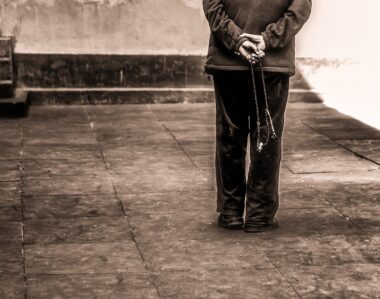Metabolic Changes with Age and the Influence of Physical Activity
As individuals age, their metabolism undergoes various changes, leading to distinct physiological adaptations. These alterations can negatively impact health and wellness, making it essential to understand how physical activity can counteract these effects. Aging often results in a decrease in lean body mass and an increase in body fat, fundamentally changing the metabolic rate. This shift can result in lower energy levels and decreased cardiovascular fitness. Additionally, hormonal changes during aging, such as alterations in insulin sensitivity, further exacerbate metabolic issues. Regular physical activity plays a crucial role in mitigating these changes by enhancing metabolic rate and promoting better body composition. Engaging in consistent exercise can help maintain lean muscle mass and improve overall metabolic health. Moreover, various forms of physical activity, whether aerobic or resistance training, have been shown to stimulate metabolic responses positively. Maintaining an active lifestyle can also support mobility and functional independence in older adults, enhancing their quality of life. Understanding these aspects can empower individuals to make informed decisions about their fitness routines as they age.
The Role of Exercise in Aging
Exercise serves as a vital element in managing the complexities of aging. It stimulates various metabolic processes that tend to slow down with age, promoting a healthier lifestyle. Regular physical activity can enhance not only physical well-being but also mental health and cognitive function. Evidence suggests that engaging in aerobic exercise and strength training can significantly reduce the risk of chronic diseases such as obesity, diabetes, and cardiovascular conditions. By improving cardiovascular endurance, flexibility, and balance, exercise contributes to overall functionality and freedom in day-to-day activities. Moreover, physical activity can help manage weight, as it assists in burning calories and restructuring body composition. This becomes particularly crucial, given that metabolic rates often decline with age. The increase in muscle mass from resistance training further boosts metabolism, making it easier for older adults to maintain a healthy weight. Lastly, exercise positively impacts mental well-being by releasing endorphins, alleviating stress, and fostering social interaction, thereby enriching the aging experience. A multi-dimensional approach to exercise is necessary for maximizing its benefits throughout the aging process.
As we age, the body’s response to physical activity adapts significantly, influenced by both physiological and psychological factors. One key aspect involves the body’s ability to recover after exercise, which tends to diminish with age. Muscles might take longer to repair, and joint recovery can be affected, leading to increased soreness or stiffness. Therefore, it is crucial for older adults to incorporate recovery strategies, such as rest days, foam rolling, and proper hydration. Furthermore, motivation may wane as physical limitations arise, making it essential to adopt adaptable exercise regimens that cater to individual capabilities. Group exercise settings or working with personal trainers can provide the necessary support and motivation for older adults, helping them stay committed to their fitness goals. Mental barriers can also challenge engagement in physical activities; therefore, focusing on enjoyable exercises can enhance adherence. Additionally, the social aspect of exercising with peers can instill a sense of community and accountability, thus sustaining long-term physical activity. By fostering supportive environments and adapting methodologies, older individuals can continue to reap the numerous benefits of regular exercise throughout their lives.
Impact on Disease Prevention
Physical activity, particularly among older adults, plays a crucial role in preventing metabolic-related diseases. As the risk of conditions such as type 2 diabetes and hypertension increases with age, the implementation of consistent exercise can significantly lower the likelihood of these occurrences. Research suggests that regular aerobic exercise enhances insulin sensitivity, thus mitigating the effects of age-related insulin resistance. Moreover, engaging in strength training complements this effort by improving muscle mass and metabolic rate. Such improvements can lead to better glycemic control, ultimately reducing the chances of developing diabetes. Additionally, activities that promote cardiovascular health, like walking or swimming, contribute to enhanced blood circulation and reduced blood pressure. Engaging older individuals in activities that are enjoyable and accessible boosts the likelihood of sustained participation, fostering a healthier lifestyle. Preventing disease through physical activity is a proactive approach that contributes positively to longevity and quality of life. Finally, education about the benefits of exercise in disease prevention must be emphasized among healthcare providers to create comprehensive programs that support active living in seniors.
Weight management is an essential part of healthy aging, particularly as metabolic changes influence body composition. Older adults often experience an increase in fat mass and a decrease in muscle mass, which can lead to undesired weight gain. Regular exercise is essential for maintaining a healthy weight, as it boosts metabolism and aids in calorie expenditure. Combining different forms of exercise, including aerobic and resistance workouts, provides a holistic approach to combat aging-related weight gain. Resistance training specifically is crucial for preserving and enhancing muscle mass, which contributes to metabolic rate. Moreover, incorporating flexibility and balance exercises can enhance overall functional ability, reducing the risk of falls and injuries. It’s important for older adults to monitor their caloric intake along with engaging in regular physical activity to achieve better weight management. Nutritional education should accompany exercise regimens, ensuring that seniors refine dietary choices that support their active lifestyles. Community programs that emphasize social support can also encourage older adults to stick to their weight management goals through collective encouragement and shared experiences, effectively leading to lasting habits.
The Psychological Benefits of Physical Activity
Physical activity offers multiple psychological benefits that are crucial for overall well-being, especially as individuals age. Exercise has been linked to improved mental health, reducing symptoms of anxiety and depression, which can be prevalent in older adults. Engaging in exercise stimulates the production of neurotransmitters such as endorphins and serotonin, leading to enhanced mood levels. Participation in group exercises can foster social connections, combating feelings of isolation that often affect the aging population. Moreover, staying active provides a sense of accomplishment and purpose, boosting self-esteem and enhancing cognitive function. Studies suggest that even moderate exercise can slow cognitive decline and promote better brain health among seniors. Mind-body exercises like yoga or tai chi provide unique benefits by combining physical activity with mental focus and relaxation techniques. This dual aspect encourages mindfulness, stress reduction, and overall mental clarity. Promoting physical activity as a means of enhancing psychological welfare is vital for improving quality of life among older adults and fostering a more fulfilling aging experience. Creating avenues for engaging in diverse physical activities tailored for this demographic is essential.
In conclusion, understanding and addressing the metabolic changes associated with aging through physical activity holds immense potential for improving health outcomes. By promoting regular exercise, individuals can manage their weight, enhance metabolic function, and prevent age-related diseases. Balance, flexibility, and strength training exercises contribute significantly to functional maintenance, enabling older adults to enjoy an active lifestyle while minimizing risks of injury. The overall effectiveness of incorporating physical activity extends beyond the physical realm; it bridges gaps in mental well-being, enriching life experiences and fostering social engagement. Continued education and awareness about the importance of exercise as an essential tool for healthy aging is vital, using targeted interventions and support to foster physical activity participation among older individuals. Families and communities should work together to create inclusive environments that support active living while challenging the barriers that impede exercise among seniors. Through a multi-faceted approach, we can strive towards healthier, more fulfilling lives for ourselves and our loved ones in our later years. Emphasizing the need for personal responsibility and community involvement will be key to sustaining these initiatives for future generations.






